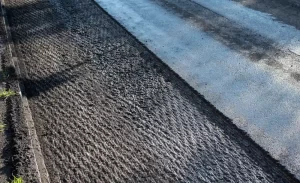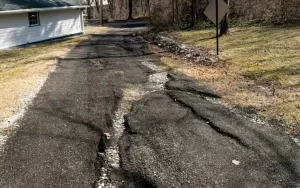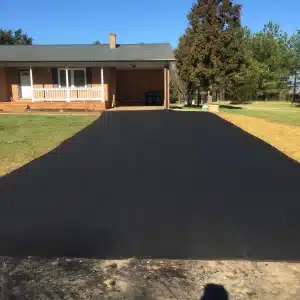What are Pot-holes Caused By?
Most drivers have had the misfortune at some point to unexpectedly drive through a pot-hole, and have their vehicle slammed into the hole at a damaging speed. This is particularly true in the Northeast part of the country and the Midwest, where a full winter season can worsen pot-holes and cause them to form through the natural processes associated with rising and falling temperatures.
Pot-holes can be particularly damaging at night, when it is far more difficult to see them, so you don’t have time to slow down and minimize the impact. Some drivers have actually incurred flat tires or wrecked suspensions as a result of hitting a pothole at an excessive rate of speed. So what causes these pot-holes, and why do they appear every spring, just like the melting of the winter snows?
Causes of pot-holes
Most pot-holes are formed in the latter stages of winter, because that’s when there are the most significant cycles of freezing and thawing of the pavement. It is this freezing and thawing cycle which promotes the formation of potholes, because it causes the asphalt pavement to break down. Then when the normal weight of traffic is also added into the mix, the breakdown of the pavement accelerates. The presence of water is generally greatest during late winter, because of the constant freezing and thawing, and when that water freezes, it expands cracks in the road into major holes.
In many cases, the freezing and thawing of late winter is also accompanied by spring rains, and when this additional water freezes, it can wreak havoc with roadways. Many people have the mistaken notion that snow plows are responsible for gouging out chunks in the road, and that this is how potholes actually get formed. However, this simply isn’t true – the roadways are always weakened by the freeze-thaw cycles which plague asphalt surfaces, and that’s where the real harm is done.
How potholes are repaired
Whatever method is used to repair a given pothole, it should always start with a thorough cleaning of the affected area, because the repair work could be significantly compromised if the pothole is not first cleaned out. Then the pothole itself should be heated up, so that any remaining moisture in the hole can be evaporated, and so the area can be softened up to prepare it for the repair mix. If any kind of re-shaping or modification of the pothole is required, it is always much easier to do when the pothole has been warmed up.
Once the pothole has been warmed up and readied for the repair mix, the hot asphalt mix can be inserted into the pothole and spread around to fully cover the hole. Then it will be necessary to tamp down the mix, so that the newly installed mix can be compressed to prevent any kind of water penetration, and so the new mix has a chance to bond with the existing asphalt surface. Once this installed mixture has a chance to cool, the repair work will be complete, and the patched surface can safely be driven upon.
Cold mix asphalt
In some cases, it is necessary to use a cold mix asphalt to repair potholes, for instance if the weather is very cold and a hot mix cannot be used. The advantage of using cold mix asphalt to repair potholes is that it stays much more flexible than hot mix does because it has a much longer cure time. For highway departments and road crews, it’s advantageous to use cold mix asphalt because it can be stored for six months or longer, in anticipation of work to be done all throughout the winter season.






